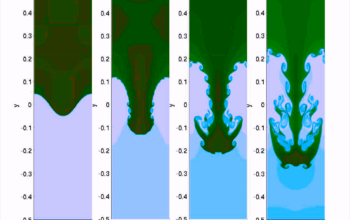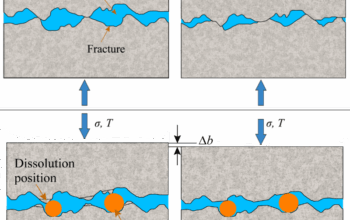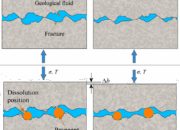The phenomenon of good news, especially concerning environmental issues, often elicits a unique reaction from various segments of the population. This response can be succinctly encapsulated in a single phrase: cautious optimism. The term itself suggests a deeper yearning for positivity amid the seemingly insurmountable challenges faced by our planet. This discourse seeks to unravel the underlying reasons for this fascination and explore the implications of good news in the context of modern physics and environmental stewardship.
To commence, it is paramount to recognize the predominant narrative surrounding climate change and environmental degradation. The cascade of information often featured in media outlets emphasizes catastrophic projections of ecological collapse, losses in biodiversity, and emergencies wrought by anthropogenic actions. Yet, amidst this relentless deluge of despair, sporadic reports emerge highlighting successful conservation efforts, advancements in renewable energy technologies, and burgeoning public enthusiasm for sustainability. Such proclamations not only provide a respite from the foreboding narratives but also promote a cognitive dissonance—a juxtaposition between the present challenges and the potential for progress.
This discrepancy may stem from the human psychological predisposition to seek out and respond to positivity. Cognitive theorists argue that amid the ambient negativity, positive alternatives stand out, serving as a counterweight to despair. This affects our perception of reality, engendering a condition described as “confirmation bias,” where individuals preferentially assimilate information that aligns with their pre-existing beliefs, thus enhancing their commitment to cause-oriented initiatives. The delight derived from good news can thus be understood not only as an emotional response but as an intellectually driven impetus toward a more hopeful engagement with environmental issues.
Moreover, the interplay between scientific innovation and public perception is noteworthy. Advances in renewable energy, such as solar and wind power, as well as repairable technologies, have garnered attention, both within academic circles and in mass media. Often, these innovations are posited against the backdrop of catastrophic climate assessments, resulting in a narrative that is both hopeful and pragmatically optimistic. The physics underpinning these technologies elucidates the potential for transformative change in energy consumption and production. As such, it becomes apparent that technological advancements in energy generation signify more than just incremental progress; they embody an existential pivot towards sustainability.
Paradoxically, the acknowledgment of successes in environmental science and technology can simultaneously reveal critical underlying issues. The illustrious examples of reforestation and marine protection, while commendable, often detract from the fundamentally systemic changes required to address climate change. Achieving a sustainable future necessitates not merely reactive measures but rather a profound restructuring of societal frameworks surrounding consumption, production, and environmental engagement. Hence, while it is vital to celebrate victories as they arise, it is equally essential to frame them within a broader discourse that recognizes their limitations and the continued necessity for urgent action.
Furthermore, the astute incorporation of physics into environmental policy presents an intriguing intersection. The laws of thermodynamics and principles of energy conservation compel us to reconsider our approach to resource utilization. As the conservation of mass-energy underpins our ability to conceptualize sustainable practices, it also underscores the inherent cost of inaction. The aggregation of positive environmental news must, therefore, serve as a catalyst for deeper inquiry into the physics of our resource management strategies. Each report lauding a new eco-initiative provides a data point illustrating the potential efficacy of science-informed policy, yet calls for an examination of its scalability and sustainability in a contested resource landscape.
Moreover, the culture of good news encompasses a broader societal discourse around environmental and ecological stewardship that extends beyond scientific validation. This perspective invites an exploration into anthropological dimensions—the collective cultural attitude toward nature and the environmental phenomena. The societal embrace of eco-friendliness and sustainability resonantly reinforces the notion of shared responsibility. By weaving positive narratives into community action, an intricate tapestry of engagement emerges, illuminating the profound influence of collective human behavior on environmental outcomes.
It is through this multiplicity of lenses—psychological, scientific, cultural—that we can cultivate a rich understanding of the significance of good news for the planet. Facilitating positive discourse requires nurturing an ecosystem of information that appreciates successful endeavors while remaining conscious of pervasive challenges. This balanced narrative can galvanize communities, encouraging broader engagement with environmental initiatives that propel society toward genuine sustainability.
In summation, the allure of good news related to the planet is multifaceted, inviting exploration into complex interdependencies between human psychology, scientific innovation, and cultural engagement. As a physicist, one must not only celebrate advancements but critically assess their contexts, implications, and sustainable viability. The interplay between the successes and challenges creates a rich soil for ongoing discussion and action—vital to ushering in a future where positive environmental narratives are not merely exceptions but a normative understanding of our global agency. Ultimately, each small victory must serve as a reminder that the scaffolding of a sustainable future is inherently built upon the aspirations, innovations, and collective will of humanity to transcend the challenges that loom ahead.












